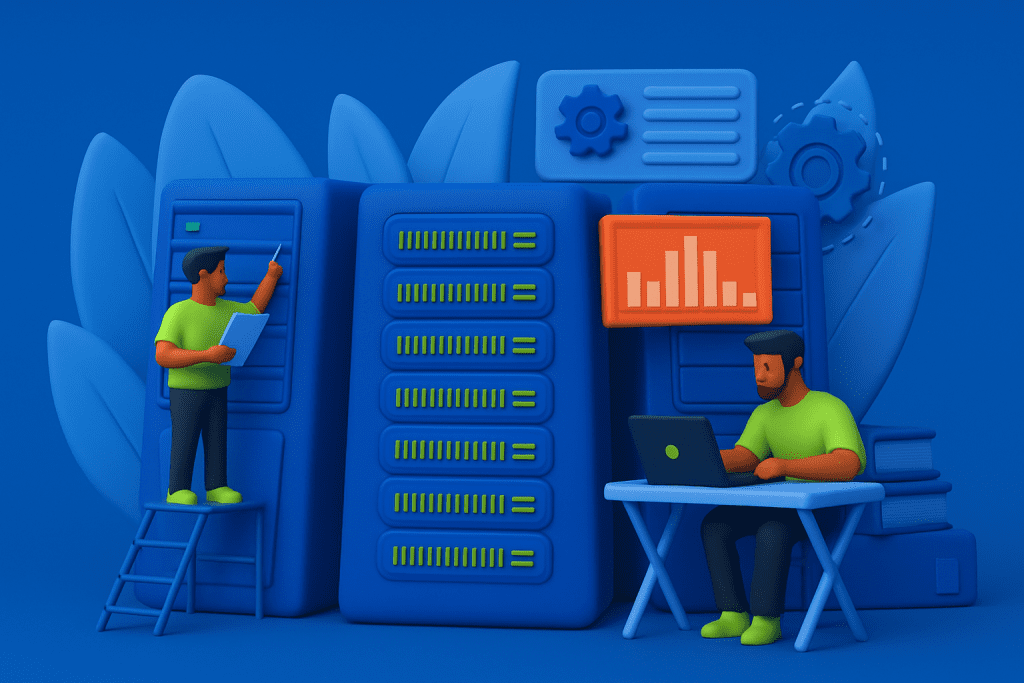For years, cloud computing was seen as the future of IT , flexible, scalable, and cost-efficient. Businesses across industries rushed to migrate their workloads to cloud platforms, believing it would simplify operations and cut costs. But now, a surprising shift is underway. A growing number of companies are moving workloads out of the cloud and back to dedicated environments.
According to recent surveys, nearly 42% of businesses have repatriated some cloud workloads to on-premise or dedicated servers. The trend signals not a rejection of the cloud, but a realization that total dependence on it isn’t always sustainable. As costs rise and control diminishes, IT leaders are rediscovering the stability and transparency that dedicated infrastructure provides.
The Reality of Cloud Cost
The cloud promised “pay-as-you-go” simplicity, but the reality has proven far more complicated. Many organizations now face unpredictable bills, opaque pricing models, and underutilized resources that quietly drain budgets every month. Cloud providers charge for compute time, bandwidth, storage reads/writes, API calls, and more , each priced separately. While this model works for small workloads, it quickly becomes difficult to manage at scale.
In India, growing mid-sized businesses typically spend between ₹4 lakh and ₹20 lakh per month on cloud infrastructure. Yet studies show that a large portion of that spend is wasted on idle instances, oversized configurations, or unused storage. Without close monitoring, these expenses pile up silently.
Adding to the challenge is pricing opacity. Even experienced IT teams struggle to forecast costs, as cloud bills fluctuate with every spike in traffic or minor configuration change. What starts as a cost-saving measure often ends in budget shock , an invoice far larger than expected. Many companies now employ dedicated “FinOps” teams or third-party tools just to make sense of their monthly usage.
In short, the cloud hasn’t always delivered the financial predictability it promised. For businesses seeking control and stability, the pendulum is swinging back toward dedicated infrastructure , where pricing is fixed, and performance is consistent.

Why Dedicated Servers Are Back
Dedicated servers offer something the cloud cannot , complete ownership of resources. With a dedicated setup, your CPU, RAM, and bandwidth belong exclusively to you. There’s no virtualization overhead, no noisy neighbors, and no risk of shared performance degradation. It’s your hardware, your configuration, and your environment.
Beyond performance, dedicated servers offer greater security and compliance, which are critical for industries like finance, government, and healthcare. Organizations in these sectors face strict data sovereignty and privacy regulations. Dedicated infrastructure ensures they know exactly where their data resides — geographically and physically — and who has access to it.
Dedicated servers also provide predictable billing and easier budgeting. Instead of fluctuating cloud invoices, companies pay a fixed monthly or annual amount , usually far less than what they’d spend on equivalent cloud resources. For many IT decision-makers, this clarity has become invaluable.
In essence, the return to dedicated servers isn’t about nostalgia , it’s about practicality. As infrastructure needs mature, businesses are realizing that high-performance, security-sensitive workloads still run best on dedicated environments designed for control and long-term cost efficiency.
The Hybrid Perspective
None of this means that the cloud is obsolete. In fact, the future is increasingly hybrid ; a balanced mix of cloud and dedicated infrastructure. The cloud remains ideal for temporary workloads, global content delivery, and rapid scaling during traffic spikes. Meanwhile, dedicated servers form the foundation of performance, reliability, and data control.
It’s worth noting that even most “cloud” platforms rely on physical servers under the hood. The difference is that with a dedicated setup, you manage those resources directly ; with full visibility, consistency, and control. The smartest organizations are now combining both models, using dedicated servers for core applications and the cloud for elasticity.
At Bagful, we’ve built our hosting philosophy around this very balance ; blending the stability of dedicated infrastructure with the flexibility of modern deployment. Our dedicated servers are designed for businesses that demand reliability, transparency, and performance without the unpredictability of traditional cloud costs.
Bagful offers customizable, backup-ready servers with clear pricing ; no hidden fees, no complex billing layers. Whether you’re hosting enterprise applications, managing client workloads, or powering data-intensive operations, Bagful delivers dedicated resources optimized for uptime and efficiency.
And when it comes to support, we believe human expertise matters. Our engineers provide 24×7 support, helping clients configure, scale, and secure their infrastructure with confidence. With data centers optimized for Indian and global performance, Bagful’s dedicated solutions empower businesses to grow with speed and certainty.
It’s time to take another look at your infrastructure. The cloud changed how we build ; but control, performance, and clarity still matter. Dedicated servers are proving once again that for modern businesses, the most reliable foundation isn’t abstract ; it’s physical.













